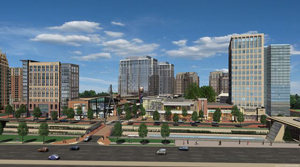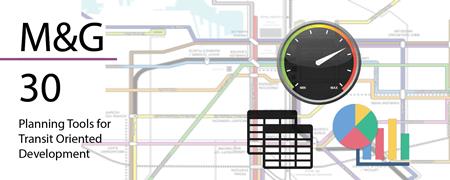Montgomery County

The most populated jurisdiction in Maryland, Montgomery County is served by the Washington Metro Subway and MARC Brunswick Line with 22 stations. Over 80 county Ride-On bus routes and 20 Metro Bus Routes by WMATA provide a wide network of bus service, including connections to transit stations. The proposed Purple Line and Corridor City Transitway will bring 24 more stations to the county.
Montgomery County has some of the most successful TOD in the state, with Bethesda and Silver Spring cited as being among Maryland’s best. The county has seen increased TOD interest near the White Flint, Twinbrook and Wheaton Metro stations. A development team is in the process of transforming the White Flint Metro Station Area into not only mixed-use and walkable development, but also green and energy-efficient features. The proposed Purple Line and Corridor Cities Transitway have sparked additional TOD planning efforts and proposals.
The county’s success with TOD is partly due to station area planning efforts for relatively high density and intensity of mixed-use zoning. Through the development approval process, county planning commissioners implement a number of strategies for development near transit to ensure better TOD, such as a strategy that allows developers to receive density bonuses if the project incorporates mixed-use design as well as other community benefits such as affordable housing. Land use and development incentives taper off with distance from the transit station to provide a transition to single-family homes. Where appropriate, the county has reduced parking minimums and instituted parking maximums to encourage transit use.
To remove some regulatory barriers to TOD, county planners loosened APFO requirements on intersections in TOD areas. This has occurred most prominently in the White Flint station area, where new developments are not required to conduct traffic studies to determine the impact of new developments. Instead, local property owners pay into a special taxing district that supports rebuilding the eight-lane Rockville Pike into a multi-modal urban boulevard and creation of a new urban grid of side streets.
The cities of Gaithersburg and Rockville also have been active in TOD planning and development. Gaithersburg designates mixed-use land use and zoning for all its station areas and is conducting station area planning for the proposed five Corridor Cities Transitway stations within the city. Gaithersburg planners have approved high-density transit oriented developments in the Crown Farm and Watkins Mill Town Center.
The Rockville Town Square Development completed in 2006 near the Rockville Metro Station is a successful example of TOD. The city’s neighborhood plans set forth mixed use or town center land uses or zoning categories for the two metro station areas in the city to encourage TOD. City planners are updating the Rockville Pike Plan, which envisions integrating land use and transportation to create an attractive and walkable place. This vision will be enforced through adoption of the Rockville Pike District Code and revising development regulations and standards for future development.
